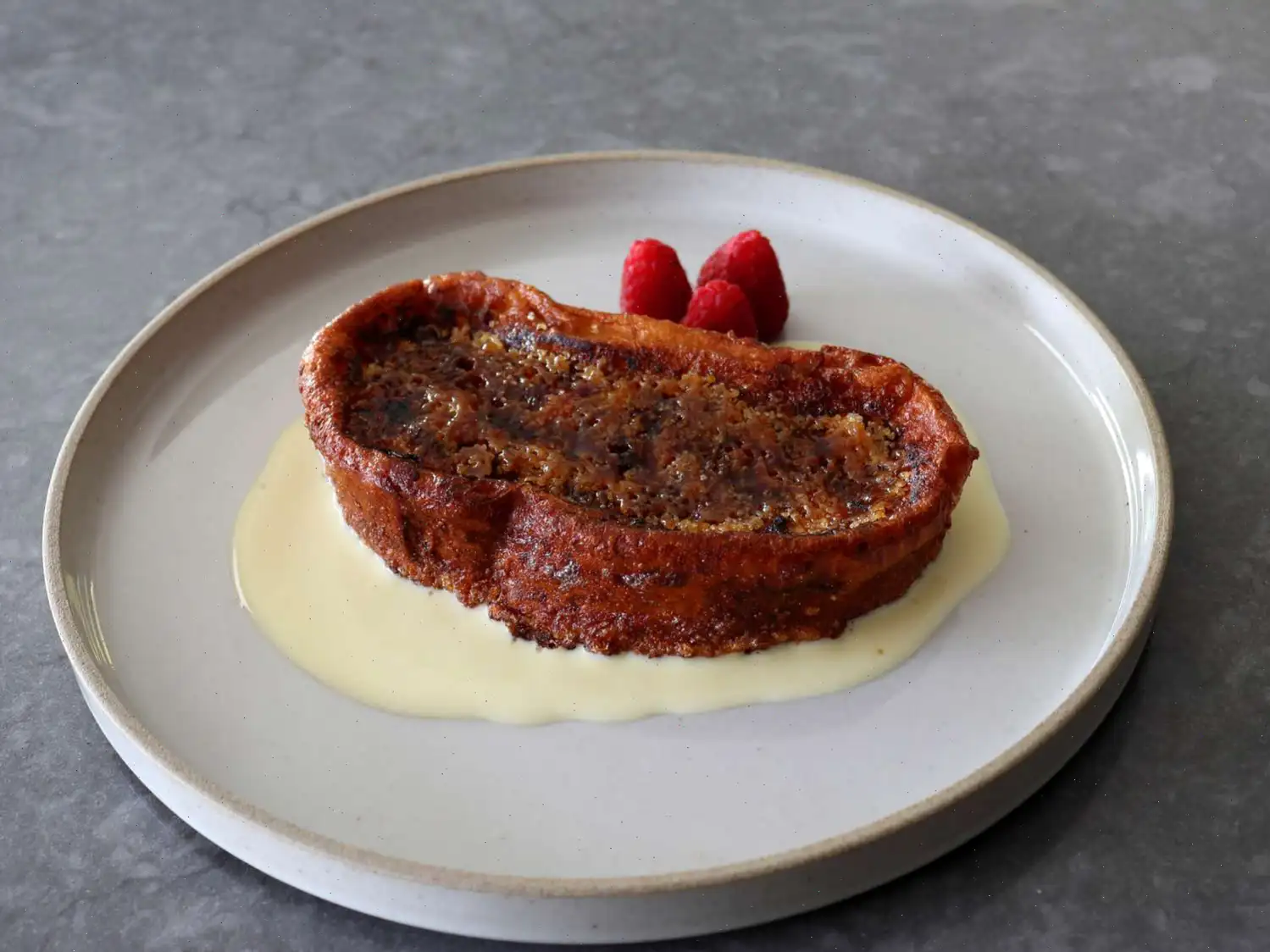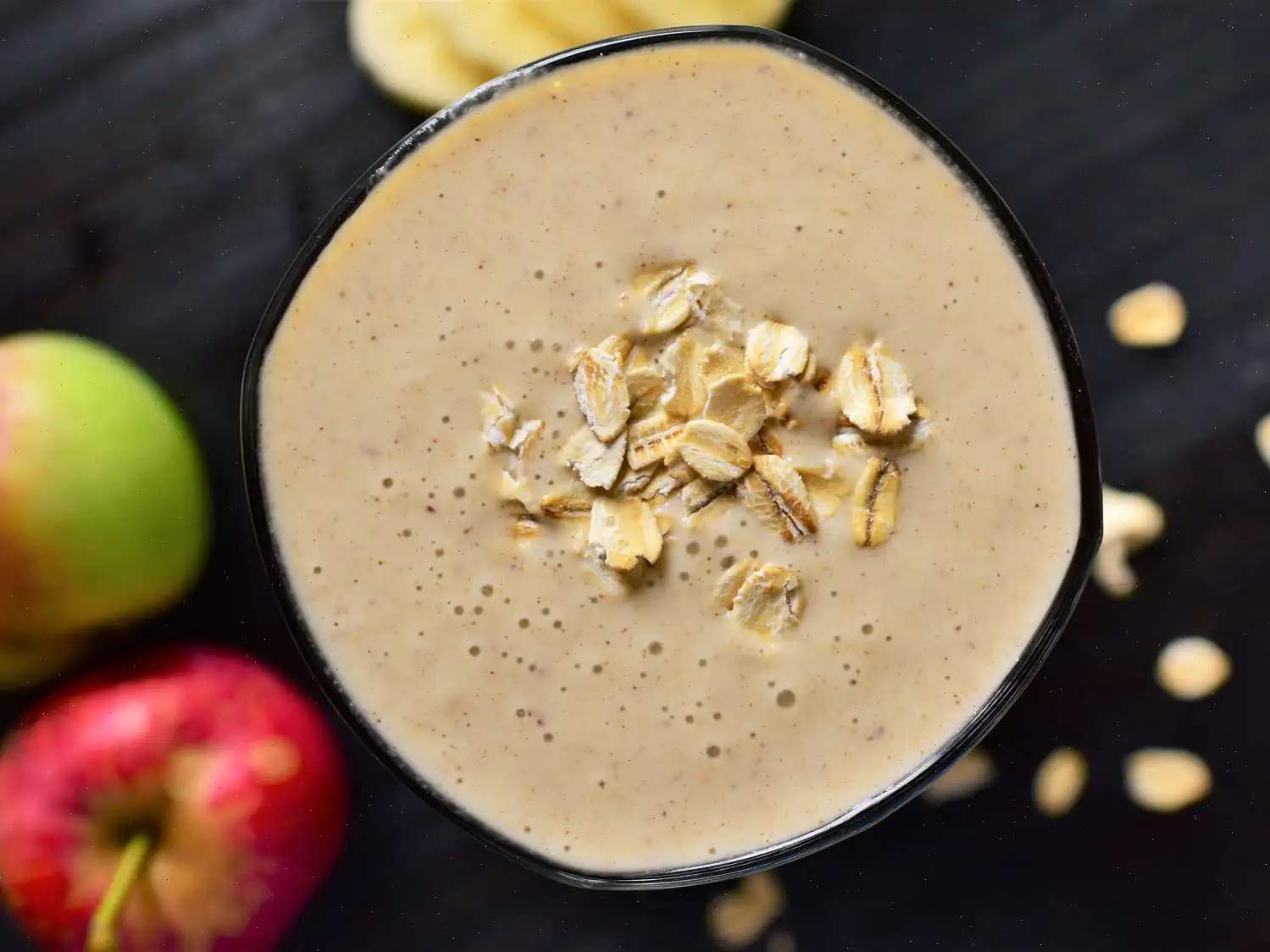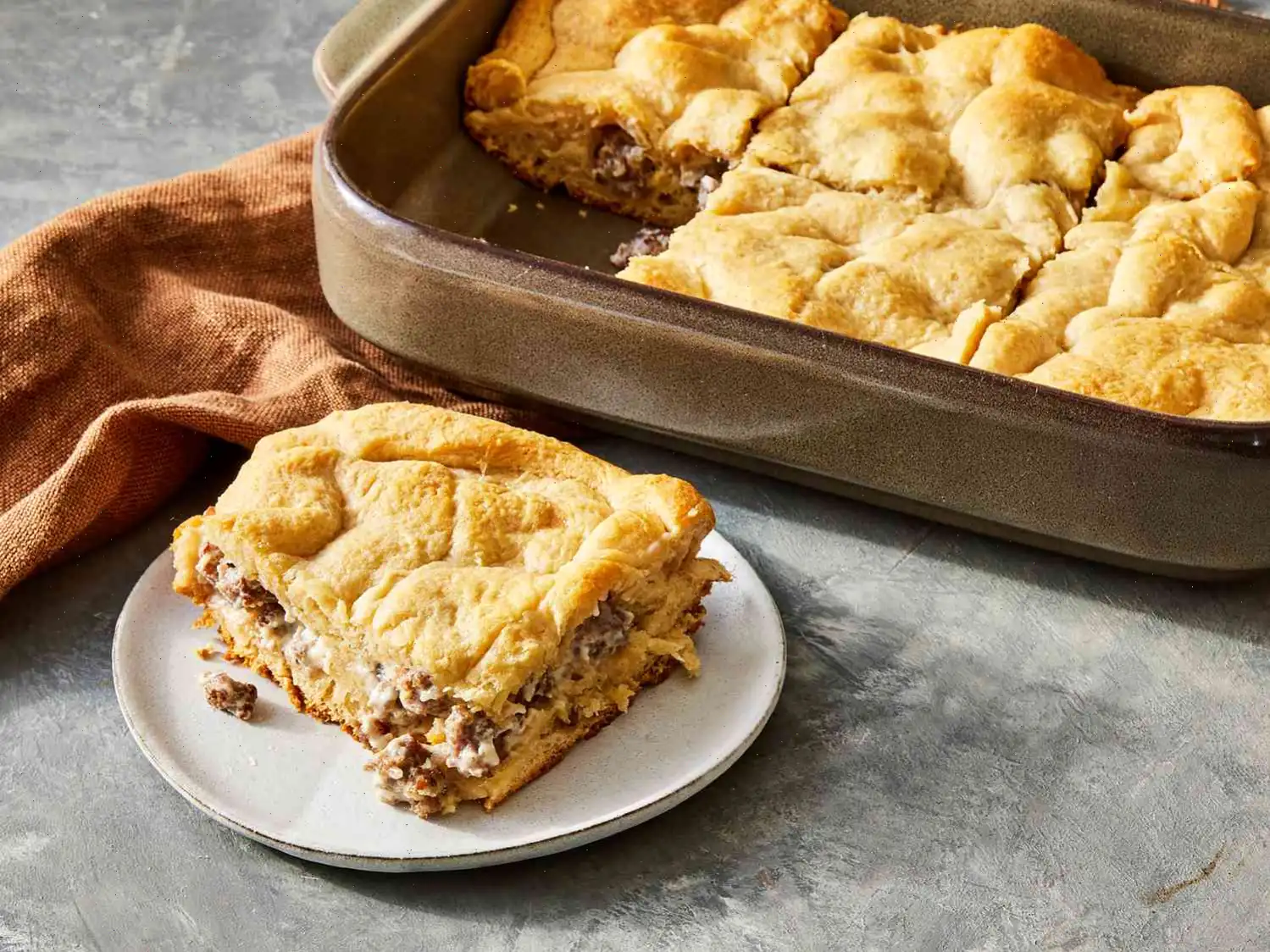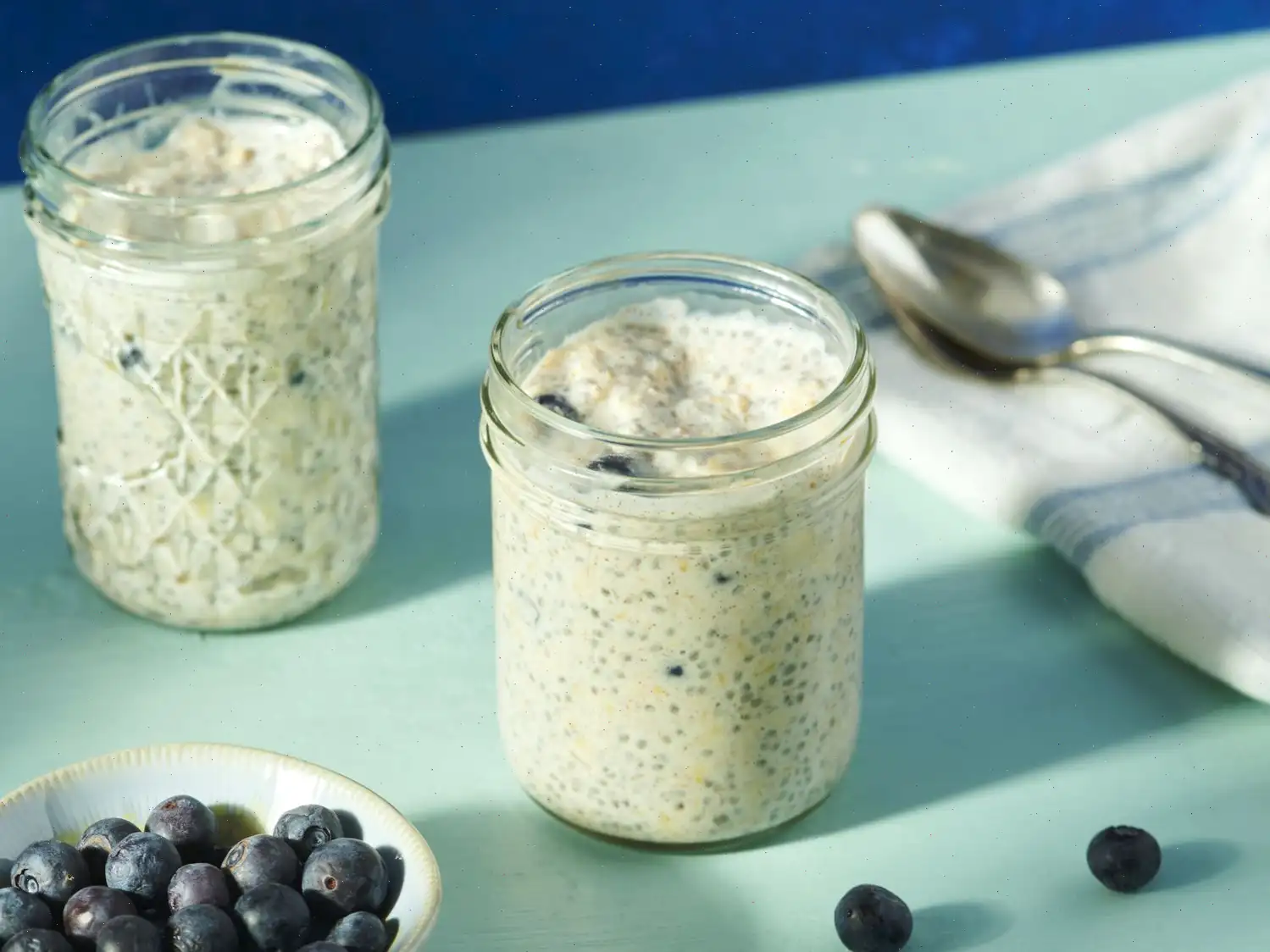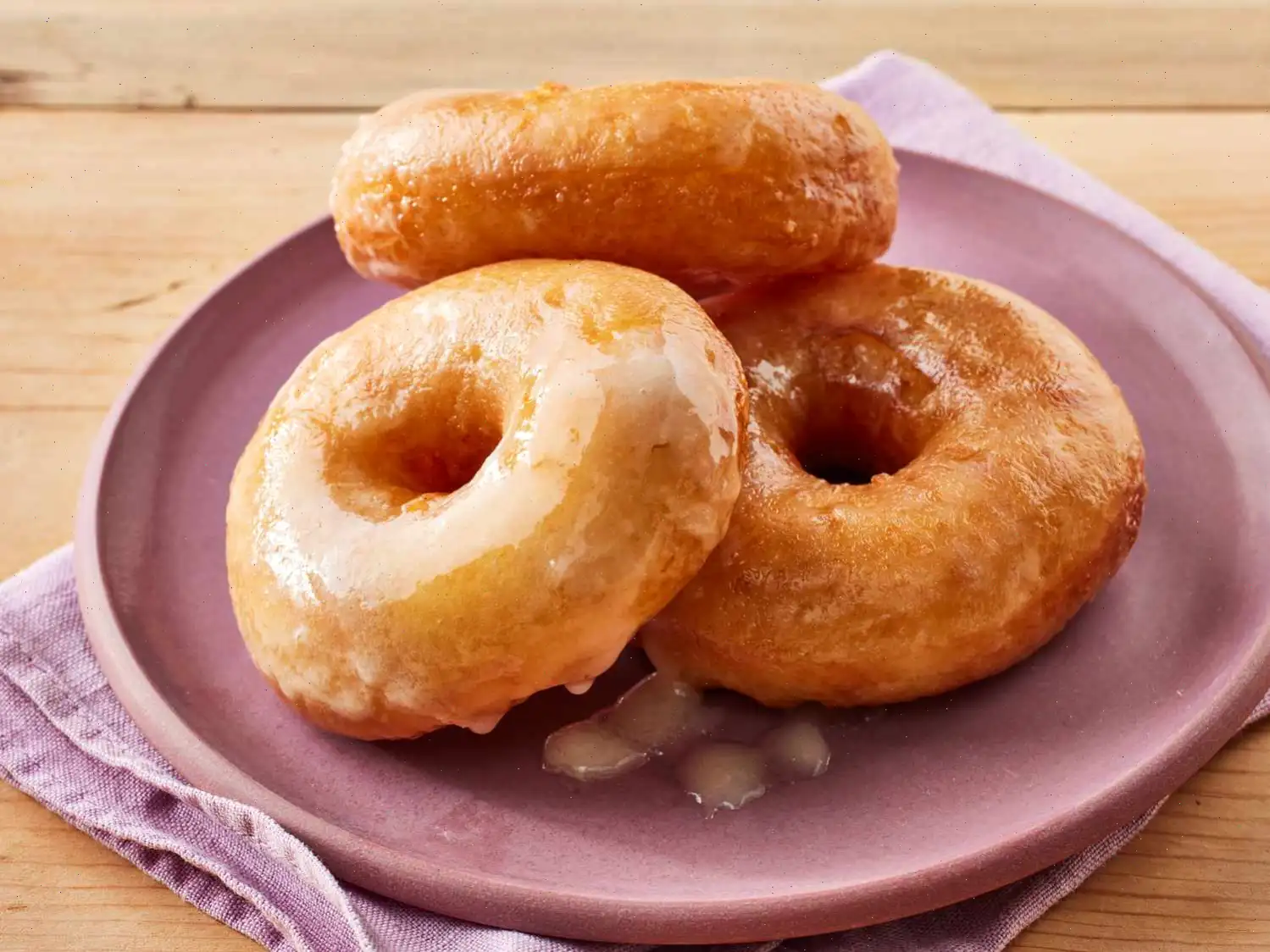
Spanish-Style French Toast (Torrijas) Recipe
Ingredients
This recipe was developed at its original yield. Ingredient amounts are automatically adjusted, but cooking times and steps remain unchanged. Note that not all recipes scale perfectly. Original recipe (1X) yields 4 servings.
Infused Milk
- 4 cups milk
- 1/2 cup white sugar
- 1/4 teaspoon salt
- 1 orange, zested
- 1 lemon, zested
- 1 teaspoon ground cinnamon
- 2 whole cloves
- 1 1/2 teaspoons vanilla extract
The Rest
- 3 large egg yolks
- 2 large whole eggs
- 4 slices stale French bread or brioche
- 1 cup olive oil, or as needed, for frying
- 4 tablespoons turbinado sugar (raw sugar)
Directions
Follow these steps to create a delicious, perfectly crispy and creamy French toast with custard sauce:
Step 1
In a medium saucepan, combine the milk, white sugar, salt, orange zest, lemon zest, cinnamon, cloves, and vanilla extract. Whisk them together and bring to a simmer over medium heat.
Step 2
Once the milk mixture starts to simmer, reduce the heat to medium-low. Let it gently simmer for about 5 minutes.
Step 3
Strain the milk through a fine mesh strainer. Pour 2 cups of the infused milk into a shallow dish, which will be used for soaking the stale bread. Set this aside.
Step 4
Transfer the remaining 2 cups of infused milk back into the saucepan to make the custard sauce. Add the egg yolks and whisk thoroughly.
Step 5
Return the saucepan to medium-low heat and cook the custard mixture. Stir constantly with a spatula, making sure to scrape the bottom, until it becomes hot and thickens enough to coat the back of a spoon.
Step 6
Remove the saucepan from the heat immediately. Pour the custard mixture through a fine mesh strainer to ensure smoothness. Let it cool, then refrigerate until needed.
Step 7
Take the stale bread slices and soak them in the infused milk. Turn them a few times to ensure that the bread absorbs most of the milk and becomes fully saturated.
Step 8
After soaking, remove the bread slices and place them on a plate or in a pan. Refrigerate them until you're ready to cook.
Step 9
In a wide, shallow bowl, beat the whole eggs. Coat each slice of soaked bread on both sides with the beaten egg.
Step 10
Pour about 1/4 to 1/2 inch of olive oil into a nonstick skillet. Heat it over medium heat until hot. Fry the bread slices for about 4 minutes per side, or until they're golden brown and puffed up.
Step 11
Once cooked, the bread should spring back when pressed gently in the center. Remove the bread from the skillet and place it on a plate.
Step 12
Sprinkle 1 tablespoon of turbinado sugar over each slice of French toast. Use a blowtorch with a low flame to brle the sugar, creating a caramelized crust on the surface.
Step 13
Serve the French toast immediately with the custard sauce on the side. Enjoy!
Nutrition Facts
Per serving:
- Calories: 874
- Fat: 17g (22% of daily value)
- Saturated Fat: 6g (31% of daily value)
- Cholesterol: 252mg (84% of daily value)
- Sodium: 875mg (38% of daily value)
- Total Carbohydrate: 161g (59% of daily value)
- Dietary Fiber: 15g (53% of daily value)
- Total Sugars: 91g
- Protein: 30g (60% of daily value)
- Vitamin C: 291mg (324% of daily value)
- Calcium: 560mg (43% of daily value)
- Iron: 6mg (35% of daily value)
- Potassium: 1411mg (30% of daily value)
* Percent Daily Values are based on a 2,000 calorie diet. Your daily values may be higher or lower depending on your calorie needs.
** Nutrient information is not available for all ingredients. The amount is based on available nutrient data. Please consult your doctor or registered dietitian if following a medically restrictive diet.

Spanish-style French toast, or Torrijas, is a traditional Spanish dish that combines the flavors of French toast, bread pudding, and crme brle in one delicious bite. This sweet, indulgent dish is popular during special occasions, particularly during Holy Week, or Semana Santa, in Spain. The recipe involves soaking slices of stale bread in a spiced milk mixture, frying them to golden perfection, and topping them with caramelized sugar for a delectable crunch.
History of Torrijas
Torrijas have a rich history dating back to the medieval period in Spain. The dish was originally created as a way to use up stale bread, a common practice in many cultures around the world. In Spain, it was traditionally eaten during Lent and Easter, as it was made with simple ingredients that were affordable during the fasting period. Over the years, the dish evolved, and now Torrijas are enjoyed year-round, especially during Holy Week, which is celebrated with much fanfare across the country. The name "Torrijas" comes from the Spanish verb "torrar," meaning to toast or grill.
Regional Variations of Torrijas
While Torrijas are a national favorite, there are regional variations in Spain that give the dish a unique flair. In the northern regions like Asturias and the Basque Country, Torrijas may be made with a slightly thicker, denser bread, often soaked in a mixture of milk and wine. In contrast, the Andalusian version is sometimes infused with flavors such as anise or orange blossom water. The toppings also vary, with some regions using honey, while others prefer raw sugar or a dusting of cinnamon. Despite these variations, the essence of Torrijas remains the same: a comforting, indulgent treat perfect for celebrating Easter and other festive occasions.
How Torrijas Differ from Similar Dishes
At first glance, Torrijas may seem similar to French toast, but they stand apart in several key ways. The primary difference is in the preparation method. While French toast is typically dipped in a beaten egg mixture before being fried, Torrijas are soaked in a flavored milk mixture before being dipped in egg. This gives Torrijas a much softer texture on the inside and a thicker, custard-like consistency. Furthermore, Torrijas are often served with a caramelized sugar topping, similar to crme brle, adding an extra layer of sweetness and texture that is absent in French toast. The addition of spices like cinnamon, cloves, and citrus zest further sets Torrijas apart, giving them a uniquely aromatic flavor profile.
Where Torrijas Are Typically Served
In Spain, Torrijas are most commonly served during the religious observances of Semana Santa (Holy Week), particularly on Good Friday. In addition to their association with Easter, Torrijas can also be found at other celebrations and family gatherings. In Spain, they are often enjoyed for breakfast or as a dessert, accompanied by a hot drink such as coffee or a glass of sweet wine. Outside of Spain, Torrijas are sometimes made for special occasions in Spanish restaurants or in homes with a connection to Spanish culture.
Interesting Facts About Torrijas
1. Torrijas have been a part of Spanish culinary tradition for centuries. The dish was even mentioned in writings by the famous Spanish author Cervantes in the 1600s.
2. The concept of soaking bread in milk and egg is not unique to Spain; similar dishes can be found in other cultures, such as Frances "pain perdu" and Italy's "pane fritto." However, Torrijas are distinct in their use of flavored milk and caramelized sugar.
3. Torrijas are often made with stale bread to reduce waste, a practice that is not only eco-friendly but also ensures the bread soaks up the rich milk mixture more effectively. This method of using leftover bread is similar to other traditional dishes around the world, like the French "pain perdu" or the Italian "pappa al pomodoro."
4. Torrijas are often enjoyed as a sweet breakfast, but in some regions, they are served with savory fillings or toppings, such as jamn (Spanish ham) or cheese, for a unique twist.
Whether you're celebrating a special occasion or simply looking to indulge in a comforting dessert, Torrijas offer a taste of Spanish tradition with a modern flair. With its rich history, regional variations, and deliciously unique flavor, Torrijas are a must-try dish for anyone interested in exploring the flavors of Spain.


